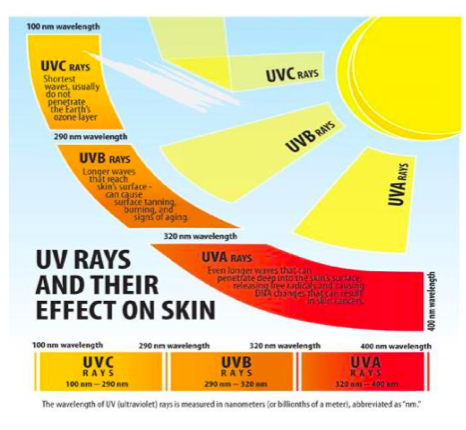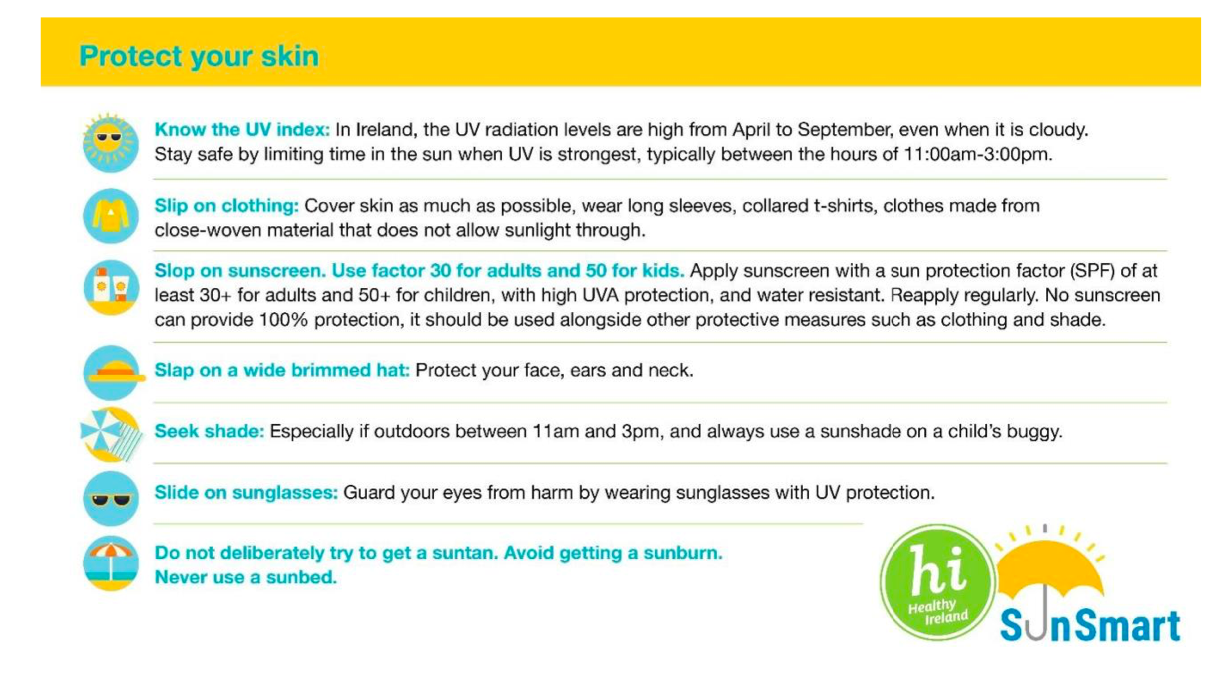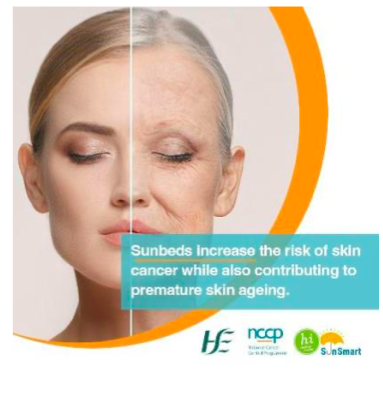Skin cancer is the most common form of cancer in Europe. With over 11,000 cases diagnosed each year it accounts for over one-third of all cancers diagnosed annually.
Skin cancer is generally classified into two groups: melanoma and non-melanoma skin cancer (NMSC). In Ireland, each year over 1,000 people are diagnosed with melanoma. Although it is not the most frequently diagnosed skin cancer, it is associated with significant ill-health, is much more likely to spread to other parts of the body and can be fatal. Non-melanoma skin cancer (NMSC) includes basal cell carcinoma and squamous cell carcinoma and accounts for over 10,000 cases per year. This skin cancer is much more common but is a less aggressive cancer which slowly progresses over months or years.
UV radiation from the sun’s rays or sunbeds cause:
● Non-melanoma skin cancer (the most common kind).
● Melanoma skin cancer, which is more serious but not as common.
Although skin cancer is one of the most common types of cancer, it is also one of the most preventable types of cancer. A vast majority of skin cancers are caused by ultraviolet (UV) rays from the sun and can be prevented.
What are UV rays?
There are three types of Ultraviolet Rays – UVC, UVB and UVA rays

Sunburn isn’t the only factor that causes skin cancer. Both prolonged exposure and burning can lead to damage of the skins layers leading to skin cancer.
The reality is that skin cancer can be caused by regular exposure to the sun over a long period of time (months or years). That includes exposure during cold weather; having a small amount of sun every day can build up without us noticing it.
Even on cool, cloudy days, the level of UV radiation can be high enough to damage your skin cells. This damage can lead to skin cancer. If you spend time outdoors, be sensible. Follow the SunSmart Code and not just on sunny days. The code includes covering up, seeking shade, the use of sunglasses and wearing sunscreen
Who needs to take extra care?
You will need to take extra care if you have:
● Pale or freckled skin that does not tan or burns before it tans.
● Naturally red or fair hair.
● Blue, green or grey eyes.
● A large number of moles.
● A history of sunburn or if you burn easily.
How can I take better care of myself in the sun to limit exposure?

The PrEvCan campaign is initiated and led by the European Oncology Nursing Society (EONS) with
the European Society for Medical Oncology (ESMO) are:
The key messages from PrEvCan on sun safety
● Using tanning beds is unsafe: avoid them and you will do your skin a favour.
● UV exposure increases your cancer risk. Enjoy the sunshine but be protected. Stay safe in the sun and use sunscreen.
● Children and young people are particularly vulnerable to skin damage from the sun.
● Routinely check your skin for changes. Always contact your healthcare provider if you have any concerns.

The PrEvCan key messages for healthcare professionals are:
● Melanoma is increasing and annually kills more than 20,000 people in Europe. ● Advise your patients to stay safe in the sun by covering up and using sunscreen ● Always refer patients with any skin concerns to an expert ● Follow best practice yourself and lead by example. |
Further Reading
● Cancer Research UK Sun, UV and Cancer Sun, UV and cancer | Cancer Research UK
● World Health Organisation – Radiation and Sun Protection WHO – Radiation and sun protection
● Sun Safety Recommendation’s – European Cancer Leagues
● Sun Safety Recommendations | Association of European Cancer Leagues - ECL